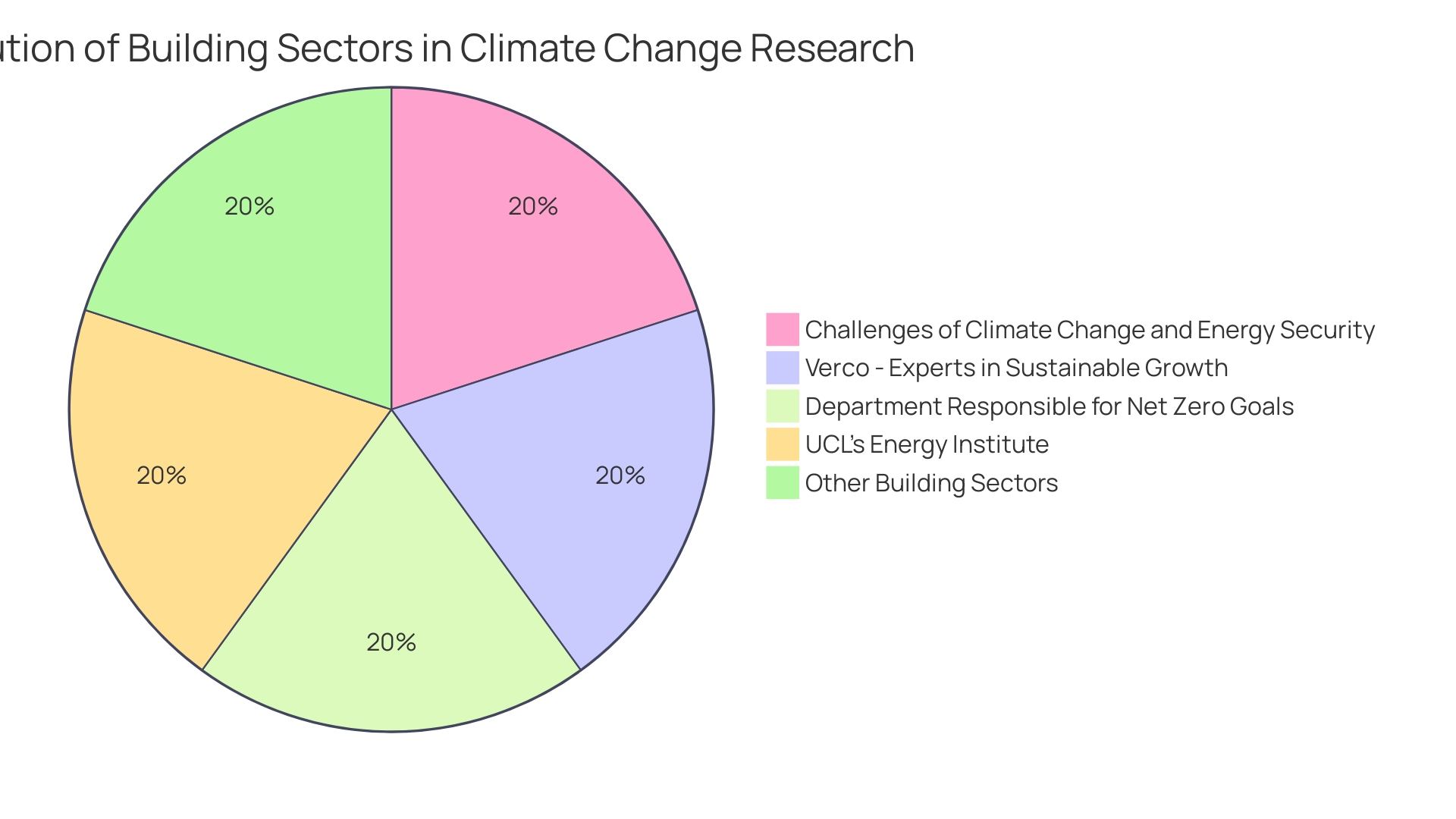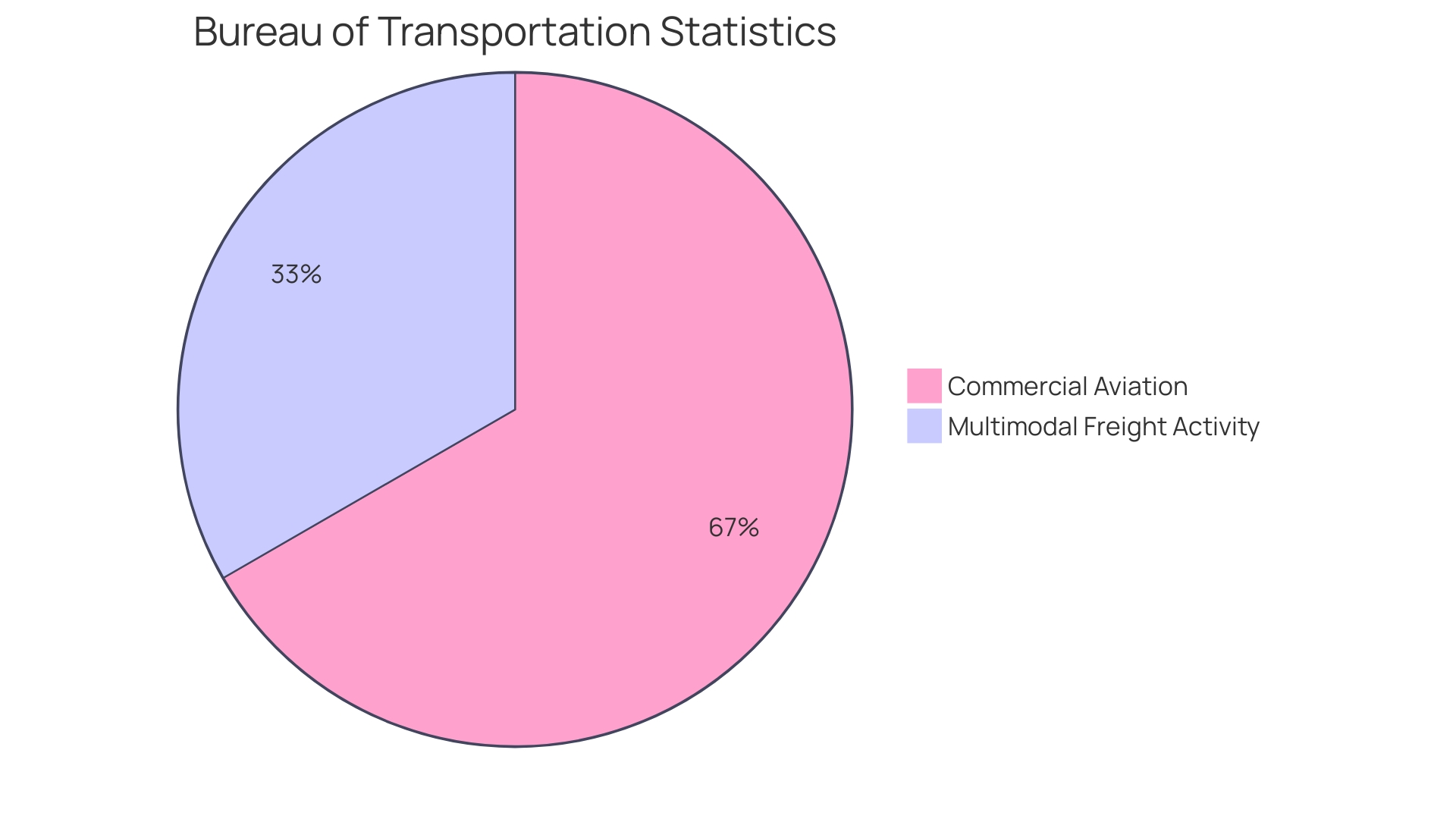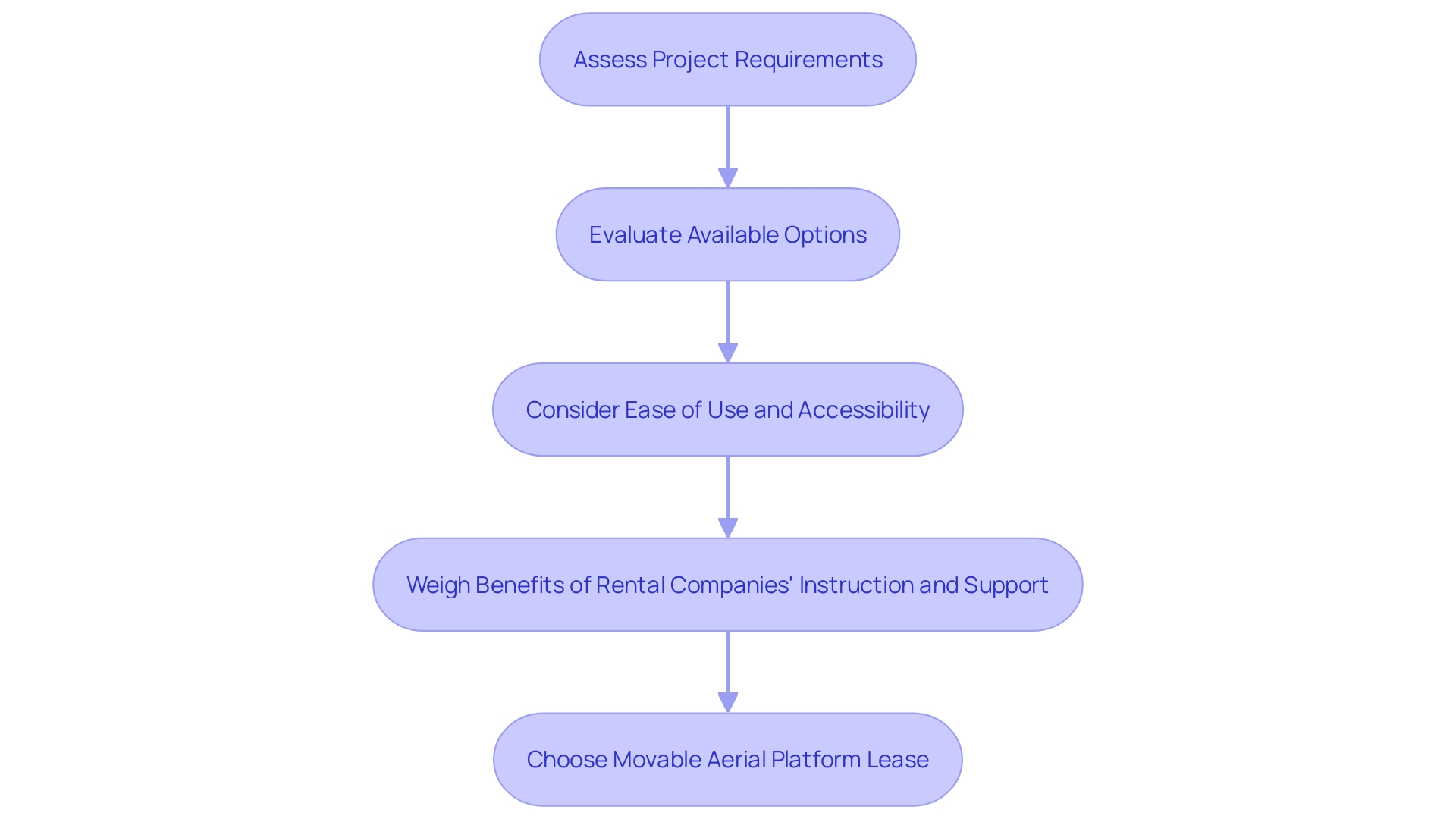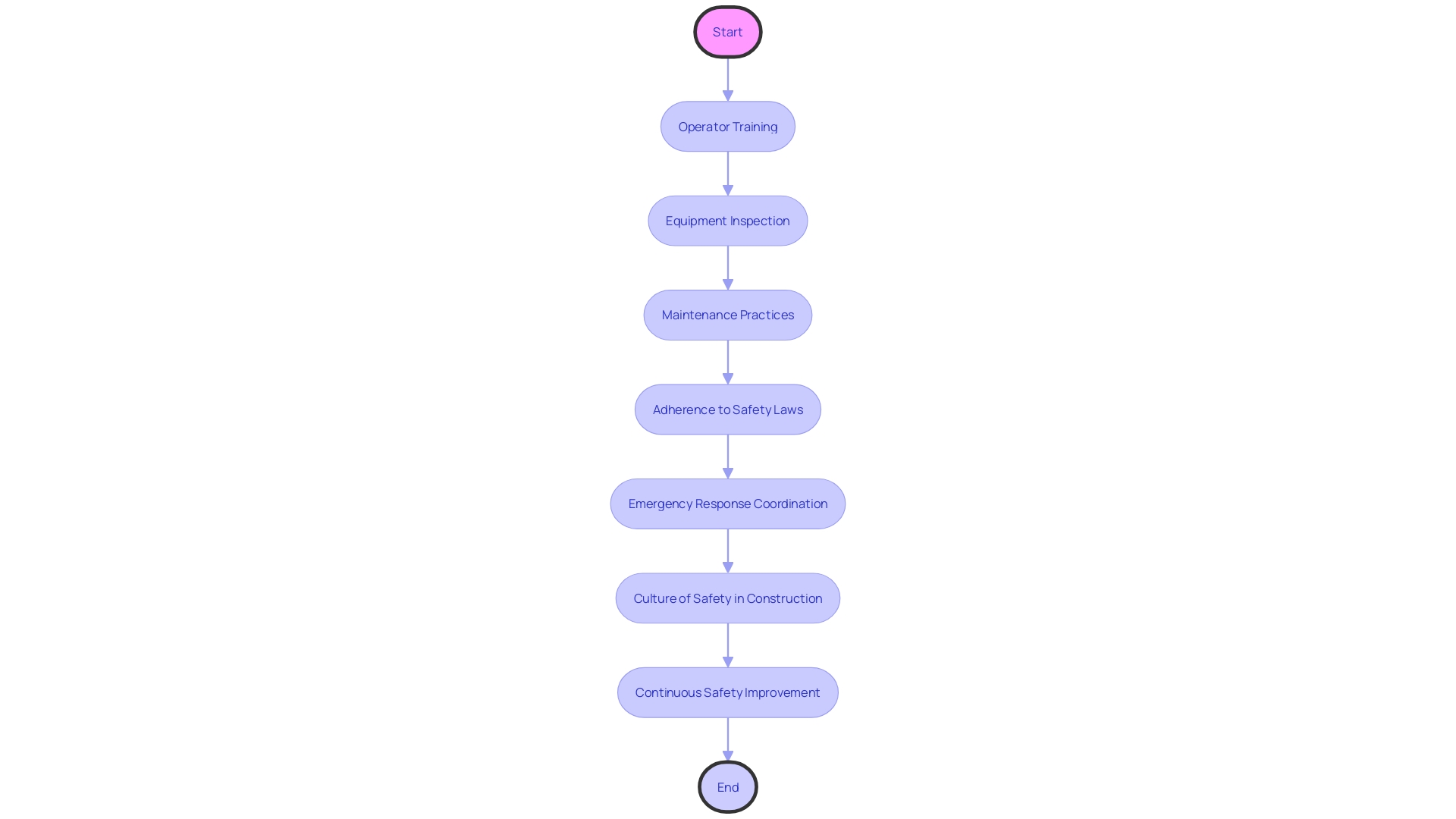Introduction
Opting for a towable boom lift is like having a versatile Swiss Army knife for vertical access in your construction project. These lifts offer unparalleled adaptability with their ease of transport, lightweight design, and compact footprint. They can effortlessly navigate narrow passageways and operate in constricted areas, enhancing productivity and operational flow on the job site.
Moreover, towable boom lifts contribute to safety and sustainability efforts by reducing the need for multiple machines and lowering the risk of accidents. With the construction industry prioritizing eco-friendly practices, these lifts also offer a reduced carbon footprint. In a rapidly evolving construction landscape where efficiency, cost-effectiveness, and safety are paramount, towable boom lifts emerge as a smart solution that facilitates swift and safe material maneuvering while upholding the sector's commitment to building a sustainable future.
Advantages of Renting a Towable Boom Lift
Choosing a towable aerial device is like guaranteeing your construction project has a versatile tool for vertical reach. The ease of transport is a standout advantage; these versatile units hitch to standard vehicles and journey effortlessly to various sites, offering unparalleled adaptability. Their relatively lightweight design and compact footprint enable them to weave through narrow passageways and operate in constricted areas, a boon for projects with spatial constraints. The efficient design of towable aerial platforms reflects the effectiveness seen in well-organized transportation networks - continuous motion without unnecessary halts, improving productivity and operational flow at the work location.
Moreover, the strategic use of such adaptable lifting equipment aligns with the industry's drive towards safety and sustainability. Utilizing the most recent technologies to minimize dangers is essential, and portable elevating platforms contribute to this by decreasing the requirement for numerous machines, thereby reducing the possibility of mishaps. As building experts progressively prioritize sustainable practices, the decreased carbon footprint linked to transporting these elevators is another acknowledgement of environmental responsibility.
In the context of the building sector's constantly changing environment, where effectiveness, cost-efficiency, and safety are crucial, portable aerial platforms emerge as an intelligent answer. They not only facilitate swift and safe material maneuvering but also uphold the sector's commitment to building a sustainable future.
Diverse Applications of Towable Boom Lifts
Mobile elevated platforms have been a staple in the building sector, playing a crucial role in a wide range of tasks that require workers to operate at different heights. These versatile machines are great at supporting activities like painting, maintenance, and installations, thanks to their extended reach and flexible articulating arms. They offer a safe and efficient means to access high areas that would otherwise be challenging to reach. The versatility of these elevators is not confined to building; they are also ideal for activities beyond the usual building range, such as pruning trees and cleaning windows. The key advantage of towable boom lifts lies in their mobility and the ease with which they can position operators precisely, even in areas that are traditionally difficult to access.
The building environment has changed to give priority to machinery that can manage the growing requirements of contemporary projects. The impressive heights of structures like the Sydney Harbor Bridge and the Eureka Skydeck emphasize the crucial role of sturdy lifting machinery in accomplishing ambitious construction projects. In an era where efficiency and versatility are crucial, the utilization of multifunctional machinery like telescopic handlers emphasizes a shift towards tools that can perform diverse roles, thereby streamlining operations and optimizing productivity. This approach not only curtains the need for multiple specialized machines but also contributes to substantial time and cost savings, which is invaluable in an industry facing economic challenges and a forecasted output growth of 15% over the next two years according to Glenigan's UK Construction Industry Forecast 2023-2025.
In line with advancements in sustainability and technology, the industry is also witnessing an uptick in investment towards machinery that aligns with environmental standards and innovation. For example, a well-known UK rental firm's recent acquisition of a fleet of new JCB rotating telehandlers, worth over £5 million, reflects the momentum towards adopting machinery that promises carbon neutrality, like JCB's initiative on hydrogen combustion engines. This trend is not only a nod to the industry's commitment to sustainability but also an acknowledgment of the critical role that adaptable, high-performing equipment plays in shaping the future of building.

Key Features of Towable Boom Lifts
Towable aerial platforms are not only a versatile choice for construction projects but also a beacon of innovation in sustainability and efficiency. These elevators showcase a flexible arm that provides outstanding accuracy in platform placement, making it indispensable for maneuvering around barriers and accessing difficult-to-reach areas. The platform's capacity to rotate a full 360 degrees empowers operators to work in any direction effortlessly, eliminating the need to reposition the equipment frequently.
Stability is a bedrock feature of towable boom elevators; they come equipped with outriggers that extend to create a sturdy base, which is crucial for operator safety during elevated tasks. These elevators represent the advancement in machinery, aligning with industry trends towards sustainable practices. As echoed by industry leaders, the future of construction machinery is moving towards carbon neutrality, with advancements such as hydrogen combustion engines paving the way for eco-friendly alternatives.
Notably, one of the UK's leading rental firms recently invested over £5 million in a new fleet of rotating telehandlers, underscoring the market's shift towards innovative and versatile lifting solutions. This investment reflects a broader trend of prioritizing machinery that can handle multiple functions, thereby enhancing cost-effectiveness and on-site productivity.
In the realm of lifting operations, the enduring reliance on mechanical systems is evident. The need for equipment capable of withstanding substantial weight, height, and environmental pressures is paramount. Towable elevated platforms are evidence of this lasting need, providing a combination of power, maneuverability, and adaptability that is necessary for the changing necessities of contemporary building assignments.

Operational Simplicity and Training
Choosing a movable aerial platform lease can be a prudent decision for teams in the building industry looking to optimize their activities. The design of these machines prioritizes ease of use with controls that are straightforward and interfaces that are intuitive. This accessibility allows even those with limited experience to operate the machinery competently after a brief period of instruction. Rental companies are recognized for aiding in this learning process by providing clear direction and instruction, equipping operators with the knowledge necessary to utilize the complete capabilities of the towable aerial platform. Consequently, this negates the need for extensive training sessions, thereby conserving valuable time and resources that can be better allocated to other project areas. Moreover, innovations in learning management systems, such as LEDVANCE's comprehensive online platform, underscore the trend towards simplifying complex technical knowledge for a broader audience, enabling users worldwide to access crucial information with ease. These advancements in technology and education echo the shift towards efficiency and practicality observed across various industries, as noted by the rise of digital project management solutions like Atlas Copco's I-Rent platform. This digitalization trend is not only seen in building but also in manufacturing, where the adoption of smart technologies and data management has become imperative to stay competitive. For those overseeing building projects, the incorporation of easy-to-use machinery such as portable elevated platforms is a move towards embracing these broader industrial changes.

Enhancing Efficiency on Construction Sites
Towable boom lifts are a game-changer for building projects, offering rapid access to high areas without the complex set of ladders or scaffolding. The simplicity and swiftness of their operation significantly enhance productivity, as emphasized by Yuji Ito of the Frontier Research Center, who likened streamlined construction tasks to efficient traffic flow—constant speed with less downtime leads to reaching goals faster. These versatile machines handle a wide range of tasks, reducing the need for multiple pieces of machinery, as demonstrated by the success of Sellick Equipment Ltd.'s rough-terrain forklifts, which revolutionized outdoor lifting. The integration of technology like the ePTO system, which utilizes a rechargeable battery for a day's work and recharges at night, further illustrates the industry's shift towards more efficient, sustainable machinery. Safety is also crucial; recent incidents such as the collapse of the truck in Manhattan remind us of the significance of reliable machinery. As building reaches new heights, the advantages of sturdy lifting equipment are evident. With a lone towable aerial platform, the requirement for extra rentals is reduced, streamlining the workflow and contributing to the smoother execution of projects.
Overcoming Obstacles: Ground and Air Challenges
With the ability to traverse difficult landscapes and reach impressive altitudes, portable elevated platforms are an essential instrument at any building location. Their rugged tires and robust chassis are specifically designed to handle a variety of surfaces, from the irregularities of undeveloped land to the unpredictable conditions of remote locations, much like the logistics team in Nuuk, Greenland, expertly transporting cargo in the Arctic. The adaptability of these elevators enables operators to overcome obstacles on the ground effortlessly, guaranteeing that whether they're navigating around existing constructions or natural obstacles, efficiency is preserved without sacrificing effectiveness. Just as the EastGRIP team encountered logistical complexities in Greenland, towable aerial platforms offer a dependable answer for challenges in building, offering the required reach and flexibility to operate at various elevations and angles, demonstrating innovation in material handling and transportation.
Horizontal Movement and Flexibility
Towable lifts are distinguished not only by their capacity for vertical ascent but also by their adept horizontal outreach. This flexibility is vital on building sites where barriers might hinder access from below or above the desired work area. The horizontal extension of the boom facilitates an extended reach that is invaluable for projects necessitating a broad coverage area. Such flexibility is emblematic of the innovation driving the industry forward, much like JCB's commitment to sustainable machinery development, including their work on hydrogen combustion engines aimed at achieving net zero carbon emissions. The focus on sustainability and innovation mirrors a wider pattern in the field of building machinery, where effectiveness and eco-friendly factors are becoming more and more crucial. Being recognized as one of the leading rental companies in the UK, their commitment to acquiring a fresh range of revolving telehandlers showcases the sector's appreciation for sophisticated lifting alternatives capable of addressing intricate logistical obstacles on contemporary building sites.
Cost-Effectiveness and Budget Management
Choosing the right equipment for your construction project is crucial for both productivity and budget management. While having a mechanical apparatus can provide the benefit of being readily accessible, it involves a significant initial expenditure, and the expenses don't cease with the buying cost. Ongoing maintenance, repairs, and storage can all add a significant burden to your project's budget, particularly for smaller projects or those with tight financial constraints.
Renting a towable boom lift, on the other hand, presents a practical alternative. It offers the flexibility to match the rental period exactly to your project timeline, avoiding the expense of machinery lying idle. This is not just about cost savings but also about adapting to the changing demands of the project without the commitment of ownership.
Moreover, rental companies typically include maintenance and repair services in the rental agreement. This not only alleviates the need for your own resources to manage maintenance, but it also provides peace of mind knowing that any downtime due to failure will be minimized, keeping your project on track.
Telescopic handlers are a testament to the value that leasing machinery holds in today's construction industry. These versatile machines have revolutionized the way materials are handled on-site, offering the ability to lift, reach, and transport with a single piece of machinery. Their adaptability saves not just on the cost of additional machines but also on the labor and time required to operate them. In a world where efficiency and productivity are paramount, telescopic handlers exemplify the benefits of having the right tool for the job at the right time.
In the context of a fluctuating economy and unpredictable market conditions, the flexibility that comes with renting becomes even more valuable. It allows you to navigate through economic uncertainties and leverage new business opportunities without the long-term risk associated with acquiring machinery.
However, it's important to note that leasing machinery, while beneficial in many circumstances, may not contribute to building equity in your company's assets. The Leasing and Finance Association emphasizes that leasing can help outfit your business for success, but it's crucial to consider your long-term equipment goals and equity position before deciding.
Renting also demands a careful evaluation of the rental company's terms and customer reviews. Limitations on device utilization and potential training prerequisites are factors that should be taken into account in your decision-making procedure.
Ultimately, the decision between renting and buying machinery should be influenced by a thorough examination of your project's requirements, your financial approach, and the wider economic situation. By carefully considering these factors, you can guarantee that your equipment strategy matches your project's goals and the overall achievement of your building efforts.
Reduced Maintenance and Storage Hassles
Boom elevators are crucial tools on numerous construction sites, offering the adaptability to access high and difficult areas. Towable aerial elevators, specifically, provide a practical answer for project managers who need to maximize efficiency and manage expenses. Instead of the financial burden and logistical complications that come with owning and caring for a full fleet, renting a towable boom lift means the rental company takes on the responsibility of maintenance and upkeep. This service ensures that the machinery is in top condition and ready for immediate use, thereby reducing downtime, as echoed by Yuji Ito of Obayashi JV, who emphasizes streamlining tasks for minimal delays, much like ensuring smooth traffic flow for better efficiency.
Furthermore, innovations such as the ePTO system, which combines a hydraulic pump, electric motor, and inverter powered by rechargeable batteries as seen in bucket trucks, show how rental tools can integrate advanced technology for day-long operations without the need for midday charging, as detailed by Parker Hannifin. This translates to more uptime and productivity on the jobsite.
Renting also tackles the problem of post-project storage for machinery. As Sellick Equipment Ltd.'s expansion from a basic machinery modification to a global rough-terrain forklift manufacturer illustrates, the appropriate apparatus can be transformative. Renting enables teams to make use of such specialized tools without the long-term commitment of buying and storing.
This rental trend, which fills a market gap for temporary needs, has seen a surge as noted by the growth of the rental businesses industry. It underscores the financial prudence and practicality of renting over purchasing, as it offers significant cost savings and flexibility without the long-term financial commitment. The ability to return the tools after use eliminates the need for storage space, which can be particularly beneficial for smaller businesses or those with fluctuating project demands.
In a climate where economic unpredictability can affect business decisions, as noted by the Equipment Leasing and Finance Association, renting provides a stable yet flexible solution that aligns well with the cautious optimism necessary in today's market. Therefore, portable elevated platform rentals offer a smart option for project managers in the building industry who want to stay flexible and control expenses efficiently without compromising their ability to handle their projects directly.
Safety Considerations for Towable Boom Lifts
Towable aerial platforms are crucial tools on building sites, offering both versatility and elevation for different jobs. However, their operation must be coupled with rigorous safety protocols to protect operators and bystanders. Integral to these safety measures are features such as emergency stop buttons, safety harnesses, and textured platforms to prevent slipping. The importance of comprehensive operator training cannot be overstated. Operators must be conversant with weight limits, fall protection systems, and emergency response procedures to effectively mitigate risks.
In light of recent events in the industry, such as the unfortunate incident involving a GM Cruise robotaxi, the significance of safety and proper response to emergencies has become even more pronounced. This event underscores the potential consequences of inadequate safety measures and the importance of a well-coordinated response to accidents. Similarly, the tragedy reported by Hanwha Ocean, where a fatal accident occurred despite stringent safety laws, further emphasizes that adherence to safety protocols is not merely a legal requirement but a moral imperative.
Regular inspections of the machinery and careful maintenance are essential practices that guarantee the dependability of towable elevated platforms. By adopting a proactive approach to safety, informed by case studies and lessons learned from incidents within the field, teams can significantly reduce the likelihood of accidents. For instance, after reviewing the FDNY's report on workers injured during the use of a lifting vehicle, it is evident that the need for thorough inspections and compliance with safety protocols is apparent.
Ultimately, the objective is to foster a culture of safety that pervades every aspect of construction work, from equipment use to overall site operations. Through a combination of advanced safety features, thorough training, regular maintenance, and a commitment to best practices, the industry can strive for an environment where accidents are the exception, not the norm.

Choosing the Right Towable Boom Lift for Your Project
Choosing the appropriate towable aerial equipment for your project is more than a matter of preference; it's about accuracy and suitability. With a multitude of options available, it's crucial to align the elevator's capabilities with your project's demands. Critical factors to weigh in include the maximum working height, horizontal reach, and weight capacity. However, apart from these technical requirements, it is crucial to take into account the environment in which the elevated platform will be used. Whether you're navigating the gentle waves of a calm inland waterway or the more challenging conditions of a worksite, the appropriate towable aerial platform must be able to handle the environment efficiently.
For instance, when working near bodies of water, such as rivers or canals, stability and maneuverability become paramount, akin to the way barges are designed for smooth transportation of goods. Likewise, in building sites, the hoist must adapt to unlevel terrain, filth, and wreckage, just as bulky equipment does in elevating maneuvers that have constructed wonders similar to the Sydney Harbour Bridge.
When consulting with rental companies, it's beneficial to discuss these requirements in detail. Their expertise can guide you to a model that not only meets your project's scope but also enhances operational efficiency. As innovation continues to shape the construction and marine industries, rental companies upgrade their fleets to include equipment that is more sustainable and capable of handling diverse challenges, much like the recent investment by a leading UK firm in a fleet of advanced rotating telehandlers.
By meticulously evaluating your project against the lift's features—and considering the latest advancements and expert insights—you can secure a towable boom lift that will contribute to the success of your project, ensuring productivity is maximized.
Conclusion
In conclusion, towable boom lifts are a versatile, efficient, and cost-effective solution for construction projects. They offer ease of transport, adaptability in narrow spaces, and contribute to safety and sustainability efforts. These lifts excel in various tasks and their mobility and precise positioning make them invaluable on job sites.
Key features of towable boom lifts include exceptional precision, stability with outriggers, and a 360-degree rotation capability. They enhance efficiency by providing rapid access to high areas, reducing the need for multiple machines, and streamlining workflow.
Renting a towable boom lift offers cost-effectiveness and flexibility, matching the rental period to the project timeline. Rental agreements often include maintenance and repair services, minimizing downtime and storage hassles. Safety considerations are crucial, and thorough training, inspections, and maintenance are essential for accident prevention.
Choosing the right towable boom lift involves considering factors such as maximum working height, horizontal reach, weight capacity, and terrain suitability. Consulting with rental companies can provide expert guidance in selecting the most suitable model.
Overall, towable boom lifts are a smart solution for construction projects, offering versatility, efficiency, and safety. They contribute to the industry's commitment to sustainability and provide a cost-effective and flexible option for project managers. By utilizing the capabilities of towable boom lifts, construction endeavors can be executed successfully and with enhanced productivity.




